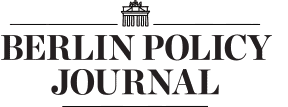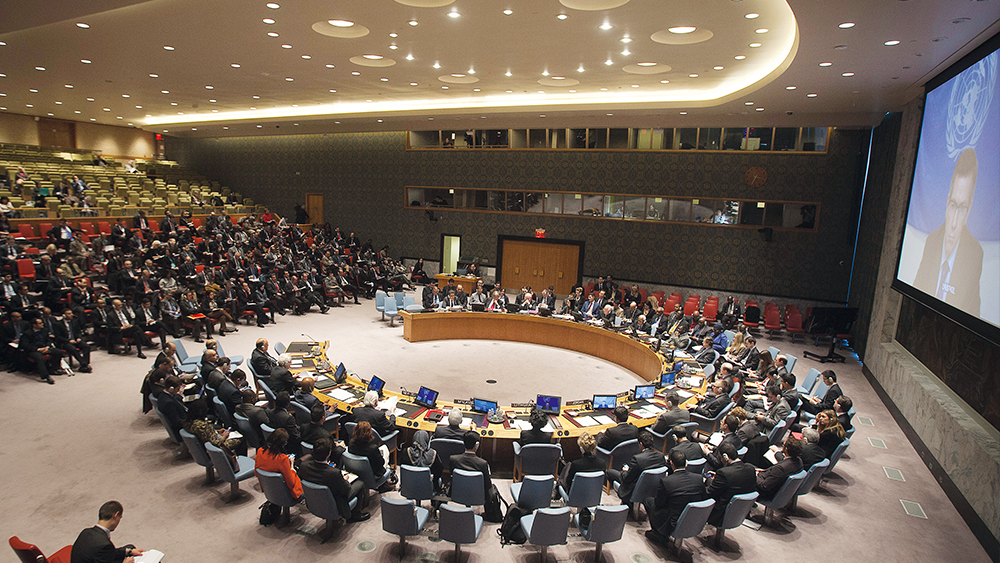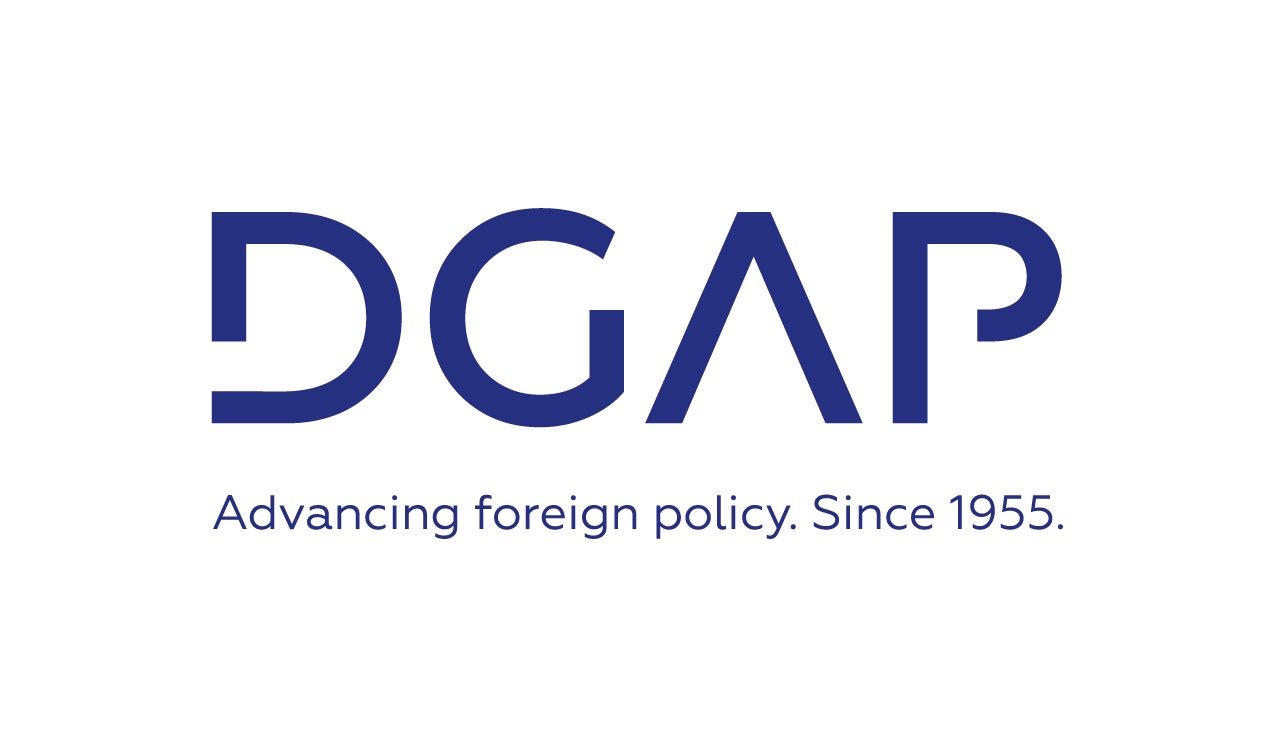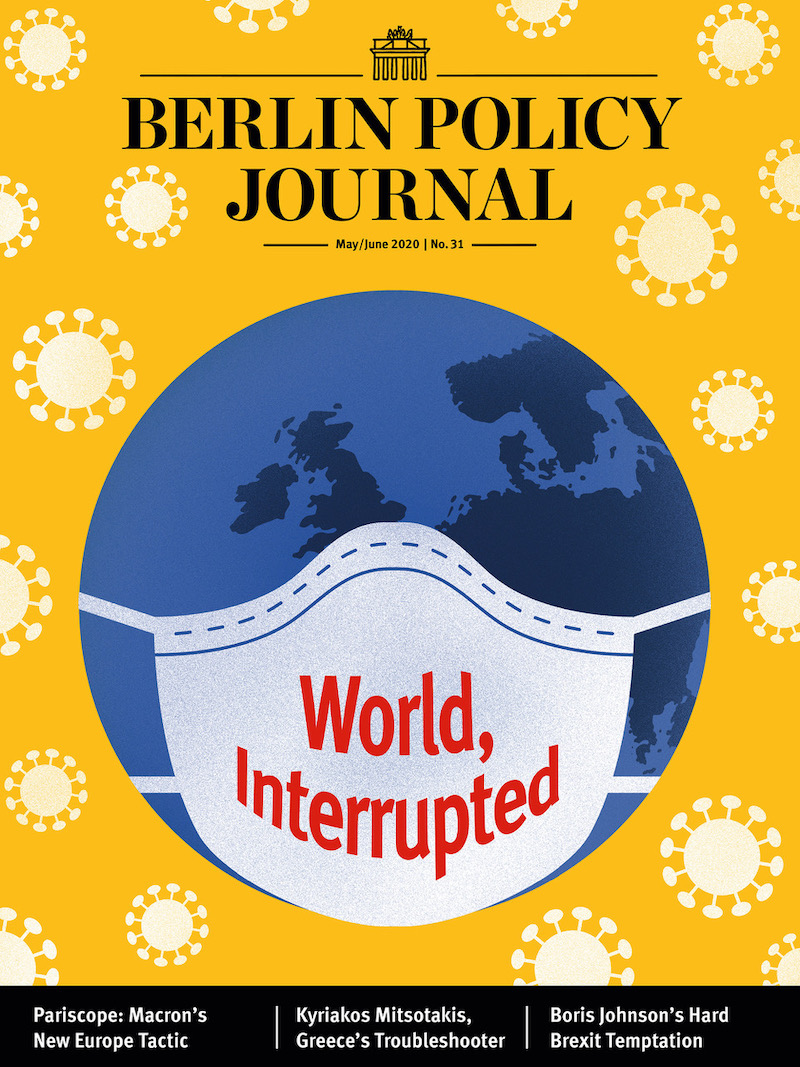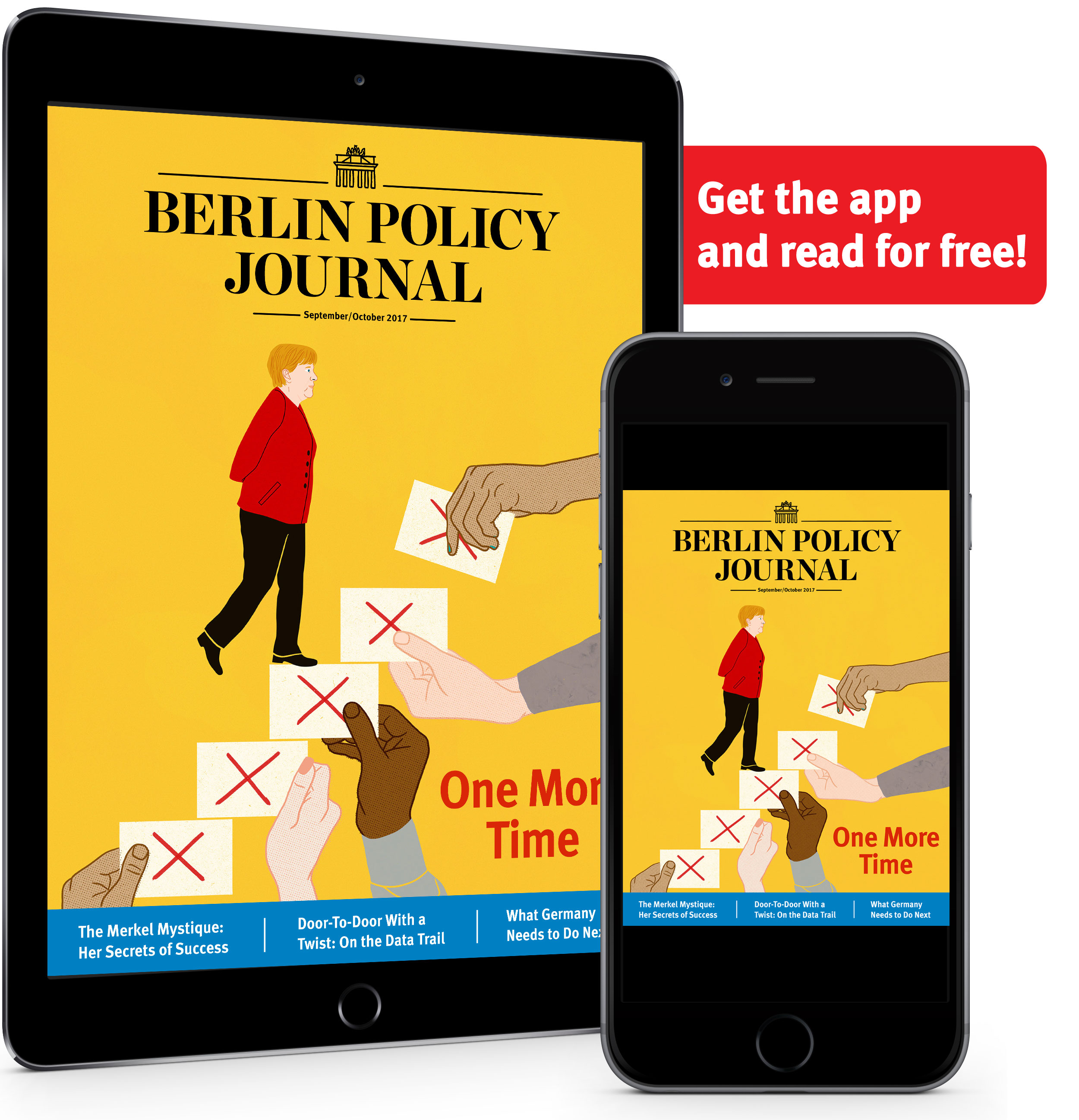The United Nations is set up in a way that is outdated, a fact apparent in the composition of the Security Council. Can the system be reorganized?
The United Nations has an undeniable claim to legitimacy: it is a global forum without equal, a framework to discuss international challenges and reach binding resolutions. More and more often, however, the UN stumbles on obstacles created by its outdated structures.This trend is especially apparent in the UN Security Council (UNSC), the central organ for the protection of peace and security. In order to effectively carry out its responsibilities, it must have legitimacy and the ability to act. It possesses less and less of both: its legitimacy is threatened by the fact that it mirrors the antiquated postwar order of 1945, which leaves some regions grossly underrepresented while privileging the interests of the five permanent members (P5); and it is less and less capable of acting, particularly when its responsibility to protect peace and stability is needed the most.
The Security Council’s recent track record is mixed at best. Perhaps most indicative of this is the fact that important international agreements are often reached in other formats and are then later endorsed pro forma by the Security Council. Examples include the agreement on the Iranian nuclear program and those reached by the International Syria Support Group. Nevertheless, it is only the UNSC that can grant such agreements the necessary international legitimacy.
The international community acknowledges the need for a reform of the UN system, at least in principle. During a summit in September 2015 in New York, Chancellor Angela Merkel, together with Germany’s closest reform partners – Brazil, India, and Japan – stressed this. But no matter how great the fundamental agreement over the need for reform is, especially when it comes to the UNSC, the way to proceed remains equally unclear. UN membership encompasses 193 states, each with its own national interests. Progress in the UN thus often means embracing the lowest common denominator. A structural reform of the UNSC would require changes to the UN Charter, which itself requires a two-thirds majority of members – meaning the concurrence of 129 member states; and should that be achieved, it could still take years until ratification allows these changes to be put into practice.
A Modernized, Transparent Process
Several reform attempts have clarified the demands. What are the issues now up for discussion? One structural change that is often mentioned is the idea of enlarging the UNSC in order to make it more representative. A majority of UN member states have spoken favorably of enlarging both existing seat categories, creating more permanent and rotating seats.
In terms of UNSC working methods, the rules governing the veto have gathered the most attention. When the veto is used, it becomes impossible for the UNSC to tackle pressing issues. This should not necessarily be interpreted as the UNSC breaking down; it is a feature of its design, meant to encourage peaceful conflict resolution. Nevertheless, the veto limits the UNSC’s ability to act in crises. There is widespread support for the demand that the P5 states – at least in the event of mass atrocities – decline to use their vetoes, allowing the UN to intervene when lives are threatened. The chances of success for this proposal remain, however, uncertain.
The process of selecting the UN Secretary-General is another topic reformers wish to address: the process followed in the past – pre-selection of a few candidates by the P5 in closed-door meetings, followed by pro-forma acclamation of only one nominee in the UN General Assembly – has been rightly criticized as opaque and undemocratic. A modernized, transparent process, especially one that provided for candidate hearings, would allow for improvement.
All three reform plans limit the powers of the P5 in order to strengthen the role of the other UN members. The tendency to eschew the UN completely and instead rely on external adhoc negotiating formats has forced the permanent UNSC members to at least engage in the reform discussion. But the initiative must come from the general UN membership – and that means overcoming individual interests and competitive relationships among the member states. Reform proposals must be drafted that can win majority support in the General Assembly and weather the pressure to maintain the status quo.
Legitimacy Through Enlargement
The urgent need for UNSC reform was recognized at the 2005 World Summit. Heads of state and government vowed to move quickly; so far, however, no progress has been made. Various groups of states have presented different approaches, including the suggestion made by Germany, Brazil, India, and Japan – the G4 – to expand the UNSC by six permanent seats and four to five non-permanent seats.
At the center of the disagreement is the question of how many new members the UNSC should take on, for how long, and with which rights. The controversy surrounding the suggestions made so far is so great as to render all of them impossible. That said, a majority of the member states favor both an expansion of the permanent seats and an expansion of the non-permanent seats. The suggested numbers vary, but result in a total between around 20 to 25, with an upper limit to ensure the efficacy of the body.
The demands for new permanent seats range from basic advocacy for higher numbers to proposals that specific countries should become new permanent members. At the same time, arguments are also levelled against the idea of permanent seats in general.
The question about the veto right divides both the P5 and those aspiring to UNSC membership. The African Group insists on a veto right for new permanent members if there is to be a veto right at all. The G4, meanwhile, suggests that new members decline to use the veto until a 15-year review process following the implementation of reform. While France has not categorically excluded the possibility of broadening veto rights, the UK has spoken out against it; and the three other permanent members – the US, China, and Russia – have little interest in an extension of veto rights.
There are also various intermediate models that raise the possibility of new seat categories. They entail additional long-term – though non-permanent – members, possibly with a chance of re-election.
In order to reconcile these often widely divergent reform positions into a single model, an intergovernmental process has begun; but so far there have not been real negotiations and thus no real progress. With the consensus reached in the General Assembly in September 2015, however, an important step was taken: a majority of members have, for the first time, voiced support for the start of text-based negotiations, taking the officially submitted positions of over 120 member states as the starting point.
However, it is important to be realistic: actual reform is not foreseeable in the near future. The debate has shaken the member states from their torpor and contributed to a more open exchange; the political forces working behind the scenes are enormous, though – both for and against reform of the status quo.
Unblocking the Security Council
The working methods of the UNSC, especially the veto rules, are also on trial. Important decisions have been blocked several times over the past few years, including Russian-Chinese double vetoes, first used in 2011 to prevent the International Criminal Court from addressing Syria, and the Russian veto in the summer of 2015 stopping the establishment of an international tribunal to investigate the shooting down of flight MH17 over Ukraine.
In the UN community, there is increasing opposition to the ability of the P5 to block decisions – decisions that in some cases could save the lives of hundreds of thousands – for reasons of national interest. Two initiatives aim to limit the use of the veto: the first, the French-Mexican veto initiative, calls for the P5 to voluntarily pass on the opportunity to use the veto in the case of mass atrocities. So far, results have been limited – the reluctance of the other P5 members to be restricted is too great.
A political declaration of support by member states for the French-Mexican veto initiative during the opening of the 70th session of the General Assembly found widespread support. We, too, support it emphatically.
The second initiative put forward in 2013 by the ACT (Accountability, Coherence, Transparency) group goes in a different direction. Through its “Code of Conduct on voting in the Security Council,” member states, when in the Security Council, would refrain from voting against any resolution to intervene in cases of genocide, crimes against humanity, or war crimes. The voluntary commitment would apply to all 193 member states, not just the P5. The project has the potential to build pressure on the veto powers through the widespread support of member states. Already over 100 countries, among them Germany, have announced their support.
The discussion over UNSC working methods has gone on for many years, and has led to practical improvements even without modifying the UN Charter. An important contribution was achieved by the “Small Five” (Costa Rica, Jordan, Liechtenstein, Singapore, and Switzerland) in 2006: they suggested several improvements that have led to more open formats – for example, the so-called “Arria Formula” meetings. Arria is the name of the Venezuelan ambassador to the UN of the time, who introduced this format. The number of such informal meetings, often convened to discuss topics of controversy in the UNSC, has risen significantly in the past few years. These are important improvements, but they cannot replace structural reforms.
A Woman for Secretary-General?
The area of reform that generates the broadest agreement among UN member states – with the exception of the P5 – concerns the process of electing the UN Secretary-General. With every new election there is louder and louder criticism of the process as it stands today, with the five permanent members deciding on a single candidate among themselves who is subsequently appointed, by acclamation, by the plenary of the General Assembly.
This process goes back to Resolution II (I) of the General Assembly from January 24, 1946; on a fundamental level, it will likely remain unchanged for the foreseeable future. Nevertheless, UN member states and civil society organizations are strongly engaged in changing this process, which is generally seen as outdated. Thus the “1 for 7 billion” initiative and the aforementioned ACT group demand the nomination of more than one candidate by the UNSC, for a one-time, seven-year term, along with a clear timeline for the election process and open hearings with candidates.
These demands enjoy widespread popularity and support. The five permanent members, however, have made it clear that the core election process – and the power of the P5 in that process – will not be altered. In certain questions of procedure, some of the P5 states have proven to be more amenable to change. some things, however, especially the nomination of more than one candidate, will not change quickly.
That said, in light of the initial resistance from the five permanent members of the UNSC, the steps agreed to by the General Assembly in fall 2015 for more transparency in the election process can be seen as a success for the UN member states. Starting in April, candidates will now be invited to “informal dialogs,” organized by the President of the General Assembly and the UNSC, at which member states can pose questions before the UNSC decides who to recommend. How far the new application process increases transparency will be seen this year.
The P5 will retain the last word in the nomination of the Secretary-General. Nevertheless, changes like the planned open hearings will mean that candidates will have much greater exposure to the public. Their communication abilities can be tested; their political opinions and earlier decisions can be questioned. For the permanent council members, it could become difficult to stick with a candidate who withers under the limelight. Thus the current changes are welcome – they are a small but important step toward more transparency.
Those advocating the selection of a woman for UN Secretary-General are meeting with wider support and less resistance. Germany, too, has joined calls to pave the way for a woman to take the office – high time, considering that all eight Secretaries-General so far have been men.
The road to institutional reform in the UN is a long one, and will require patience and determination – however, it is necessary to ensure the UN’s efficacy in the future. It is not enough to take the UN’s unique global legitimacy for granted: we must actively defend it, preparing the organization for an ever more complex modern world.
Read more in the Berlin Policy Journal App – March/April 2016 issue.
